The wrong move after eye surgery can cost a cornea. The right antibiotic can be the difference between a quiet post‑op week and a panicked phone call at 2 a.m. This guide gives a realistic, evidence‑based look at where besifloxacin fits in preventing and treating post‑operative ocular infections-what it does well, where it falls short, and how to use it without overusing it.
TL;DR: The quick answer on besifloxacin after eye surgery
Here’s the short version for busy surgeons, ODs, pharmacists, and nurses:
- What it is: Besifloxacin 0.6% is a topical fluoroquinolone (brand: Besivance) formulated in a mucoadhesive vehicle to boost corneal/surface exposure. FDA‑approved for bacterial conjunctivitis; used off‑label around surgery.
- Where it helps: Strong gram‑positive coverage (staph/strep, including many resistant strains), good gram‑negative coverage (except weaker against Pseudomonas than some agents). Helpful as an adjunct to povidone‑iodine and intracameral antibiotics; useful for mild early surface infections.
- What it doesn’t do: It does not replace intracameral antibiotics for endophthalmitis prevention and cannot treat established endophthalmitis (you need intravitreal therapy). Evidence for topical antibiotics lowering post‑cataract endophthalmitis beyond intracameral prophylaxis is limited.
- How to dose: Common peri‑op patterns-QID for 1 week post‑op; or start day of surgery and continue 7 days. For suspected mild post‑op keratitis, load (every 1-2 hours while awake for 24 hours), then taper to QID for 1-2 weeks based on response.
- Why pick it: Potent against ocular staph (including many MRSA/MRSE isolates), low resistance pressure due to no systemic counterpart, and long surface residence time. Downsides: higher cost vs generics, weaker Pseudomonas kill than fortified options.
How to use besifloxacin around eye surgery: step‑by‑step
Below is a practical flow that matches the jobs you came to do: pick the right prophylaxis plan, choose or avoid besifloxacin in specific surgeries, treat early infections fast, and know when to escalate.
1) Pre‑op and immediate post‑op prophylaxis
Non‑negotiables first: antisepsis. Multiple guidelines emphasize 5% povidone‑iodine to the conjunctival sac and lid margin before incision as the single most effective surface step (AAO Preferred Practice Pattern, 2023). For cataract surgery, the ESCRS randomized trial showed intracameral cefuroxime reduced endophthalmitis risk several‑fold compared with no intracameral antibiotic (ESCRS study group, 2007). In the U.S., many surgeons use intracameral moxifloxacin.
Where does besifloxacin fit? As an adjunct topical, not a replacement. If you want a topical with excellent gram‑positive coverage and sticky residence time, besifloxacin is a rational choice. Common patterns:
- Cataract surgery: 1 drop QID starting the day of surgery, continue 7 days. Some start 1-3 days before; if your SSI rates are low with standard prep and intracameral, pre‑op dosing is optional.
- LASIK/PRK/SMILE: 1 drop QID for 5-7 days. For PRK, consider 7-10 days because the epithelial defect is open longer.
- Trabeculectomy/bleb surgery: Use with care. Antibiotics are often used short‑term post‑op, but bleb leaks or avascular blebs raise late infection risk (blebitis). If you suspect blebitis, do not rely on a single agent-escalate and culture.
Why QID when the label for conjunctivitis is TID? The label reflects conjunctivitis trials, not surgery. Surgeons often choose QID to cover the increased bioburden and wound access in the first week. If adherence is shaky, TID is reasonable; the DuraSite vehicle helps maintain exposure.
2) Treating early post‑op surface infections
Signs that push you from prophylaxis to treatment: focal infiltrate with overlying epithelial defect, increasing pain/photophobia beyond the expected course, anterior chamber reaction that doesn’t track with day‑to‑day recovery, mucopurulent discharge, or a hot bleb.
For mild suspect bacterial keratitis limited to the epithelium or small peripheral stromal infiltrate:
- Load: Besifloxacin every 1-2 hours while awake for 24 hours.
- Reassess at 24 hours: If smaller/clearer edges and less pain, taper to QID for 7-14 days.
- No improvement or central/large infiltrate: Culture, add a second agent (e.g., tobramycin), or move to fortified therapy (vancomycin/ceftazidime) per local protocol. Consider HSV or fungal if history or appearance fits.
Suspected blebitis: Treat aggressively (broad topical coverage and consider intrableb/intracameral or systemic per your glaucoma service). Besifloxacin alone is not enough for a hot bleb.
Suspected endophthalmitis: Decreased vision, hypopyon, severe pain-this is an immediate call for intravitreal antibiotics after vitreous tap. Topical drops, including besifloxacin, are supportive only. Do not delay intravitreal therapy.
3) When to avoid or de‑emphasize besifloxacin
- Likely Pseudomonas keratitis (e.g., contact lens overuse, explosive course, greenish discharge): You need antipseudomonal power-fortified tobramycin/ceftazidime or a fourth‑gen fluoroquinolone with strong Pseudomonas activity, often in combination. Besifloxacin can be adjunctive but shouldn’t be your only drug.
- Known FQ allergy: Avoid and choose a non‑fluoroquinolone regimen.
- Severe epithelial toxicity concern: DuraSite is generally well tolerated, but any topical antibiotic can irritate. If a flap or epithelial defect looks angry and you suspect drop toxicity, re‑assess the regimen and frequency.
4) Practical dosing heuristics
- If you use intracameral antibiotics routinely and your endophthalmitis rate is already very low, keep besifloxacin as an adjunct for surface control and for high‑risk eyelid flora (rosacea, chronic bleph, prior MRSA colonization).
- Pick QID for 7 days post‑op; extend to 10-14 days in PRK or if sutures are present and the surface is unstable.
- In suspected infection, think 24‑hour rule: heavy load first day, then narrow or escalate based on the day‑one response.
- Don’t taper below BID during active infection; go to zero only when the epithelium is intact and the infiltrate is quieting.
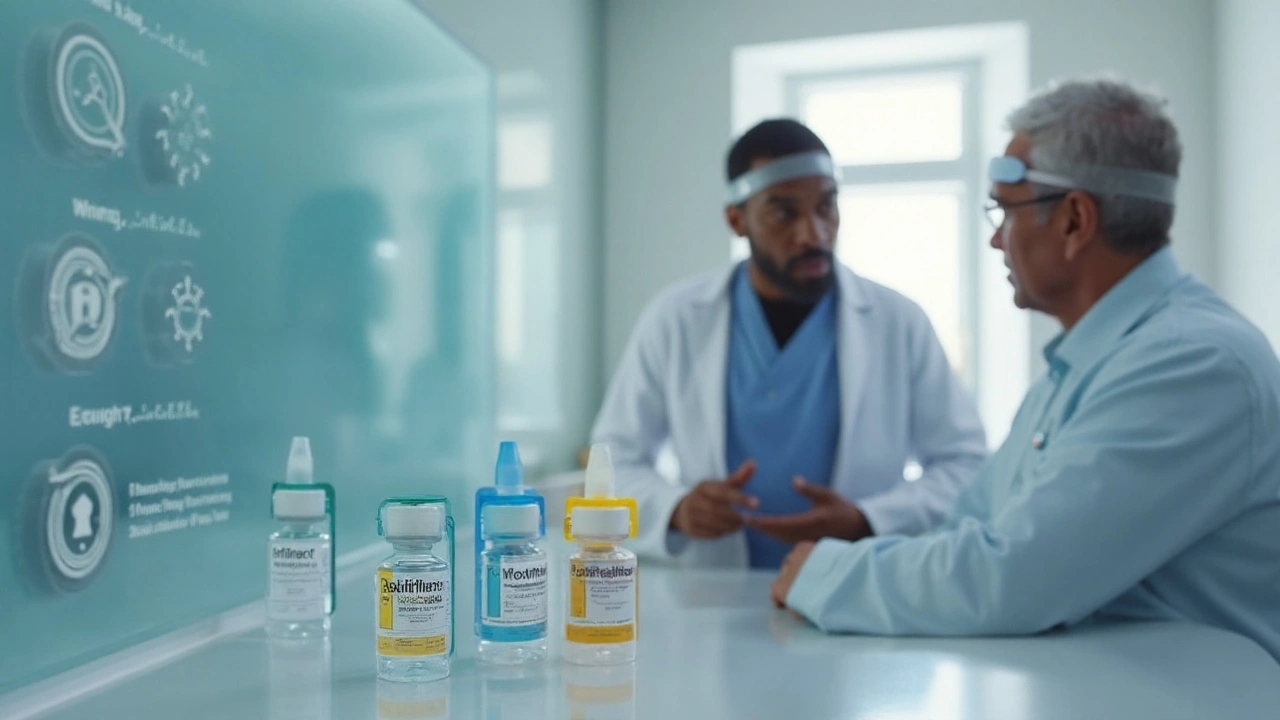
Evidence and comparisons: does besifloxacin really lower post‑op infections?
Three questions matter: 1) Is it potent against the bugs that actually cause post‑op infections? 2) Does topical prophylaxis reduce endophthalmitis beyond intracameral antibiotics and povidone‑iodine? 3) How does it compare with other topical agents on resistance and tolerability?
1) Spectrum and resistance
Most post‑op endophthalmitis and early keratitis cases come from gram‑positive cocci (coagulase‑negative staphylococci, Staphylococcus aureus, Streptococcus species). Gram‑negatives, especially Pseudomonas, loom larger after corneal surface procedures and in contact lens wearers.
Besifloxacin shows high in‑vitro potency against gram‑positive ocular isolates, including many MRSA/MRSE strains, with consistently lower MICs than older fluoroquinolones in surveillance studies. The ARMOR program (Antibiotic Resistance Monitoring in Ocular Microorganisms; Asbell et al., JAMA Ophthalmology, 2020 update) reported lower resistance rates to besifloxacin compared with moxifloxacin and gatifloxacin among staphylococci collected from U.S. eye clinics across a decade. Its balanced inhibition of DNA gyrase and topoisomerase IV appears to reduce single‑step resistance selection in vitro.
Gram‑negative coverage is good for Haemophilus and Moraxella; activity against Pseudomonas aeruginosa is variable and typically less potent than fortified antipseudomonal regimens. Translation: great first‑line coverage for likely gram‑positives; rely on something stronger if Pseudomonas is high on your differential.
2) Does topical prophylaxis reduce endophthalmitis?
Topical antibiotics alone have not shown the dramatic risk reduction seen with intracameral antibiotics in cataract surgery. The ESCRS randomized trial (2007) was a turning point: intracameral cefuroxime reduced endophthalmitis several‑fold versus no intracameral use. Subsequent observational cohorts suggest topical antibiotics may add a small additional safety margin on the ocular surface, but high‑quality randomized data isolating the added value of topical agents on top of intracameral prophylaxis are limited.
Current guidance (AAO Preferred Practice Pattern - Cataract in the Adult Eye, 2023) emphasizes povidone‑iodine antisepsis and endorses intracameral antibiotics as the most evidence‑based endophthalmitis prophylaxis. Topical antibiotics are considered adjunctive and commonly used, especially in the U.S., but they’re not the main driver of endophthalmitis risk reduction.
3) Why choose besifloxacin among topicals?
Three practical reasons:
- Potency against ocular staph, including many methicillin‑resistant isolates, which remain the leading pathogens in early post‑op infections.
- Formulation: The mucoadhesive DuraSite vehicle increases tear film residence time, achieving high surface exposure without ultra‑frequent dosing.
- Ecology: Because there is no systemic besifloxacin, community‑wide resistance pressure may be lower than with fluoroquinolones that are heavily used systemically.
Limitations: Higher out‑of‑pocket cost compared with generic ofloxacin/ciprofloxacin; variable insurance coverage; and less impressive Pseudomonas kill than fortified options.
| Agent | Class/Vehicle | Strengths | Weaknesses | Typical Post‑Op Use |
|---|---|---|---|---|
| Besifloxacin 0.6% (Besivance) | Fluoroquinolone / mucoadhesive suspension | Excellent gram‑positive activity (incl. many MRSA/MRSE), long surface contact, low systemic resistance pressure | Cost; weaker vs Pseudomonas than fortified regimens | Adjunct prophylaxis QID × 7 days; load‑and‑treat mild keratitis |
| Moxifloxacin 0.5% | Fluoroquinolone / solution | Broad spectrum; commonly used intracamerally (off‑label) in U.S. | Staph resistance rates higher than besifloxacin in surveillance data | Adjunct topical; cornerstone intracameral in many centers |
| Gatifloxacin 0.5% | Fluoroquinolone / solution | Broad coverage; affordable generic in some markets | Similar resistance concerns to moxifloxacin for staph | Adjunct topical; alternative to moxi |
| Ofloxacin 0.3% | Fluoroquinolone / solution | Low cost; decent Pseudomonas activity | Weaker gram‑positive potency; higher resistance | Budget option; consider for low‑risk prophylaxis |
| Tobramycin 0.3% | Aminoglycoside / solution | Good Pseudomonas coverage | Poor streptococcal coverage; epithelial toxicity risk | Combo therapy for suspected Pseudomonas keratitis |
| Trimethoprim/polymyxin B | Folate inhibitor + membrane disruptor | Low cost; good against many gram‑positives (trimethoprim) and gram‑negatives (polymyxin) | Not reliable for Pseudomonas keratitis; less potent vs resistant staph | Budget prophylaxis; adjunct in mild infections |
Checklists, decision trees, and pro tips
Peri‑operative antibiotic playbook
- Always: 5% povidone‑iodine to conjunctival sac and lid margins prior to incision.
- Cataract: Prefer an intracameral antibiotic (cefuroxime, moxifloxacin) at the close.
- Topical adjuncts: Choose a single agent with strong gram‑positive coverage. Besifloxacin QID × 7 days is reasonable; avoid stacking multiple similar agents without a reason.
- Sutures present or PRK: Extend to 10-14 days if the surface is slow to close.
- Lids/tears: Treat blepharitis/meibomian disease pre‑op (lidscrubs/heat). Reduce bioburden rather than “cover it” post‑op.
When to escalate beyond besifloxacin
- Central infiltrate ≥2 mm, rapidly enlarging lesion, severe pain, or hypopyon: culture, start fortified antibiotics, and consider cornea consult.
- Hot bleb or vision drop post‑cataract with vitreous cells: immediate retina consult for tap/inject.
- Suspicion of fungal or herpetic keratitis: stop steroids, culture/smears, and switch to appropriate antifungal/antiviral therapy.
Pro tips that save headaches
- Write simple scripts. “Besifloxacin 0.6%: 1 drop QID x 7 days.” Patients remember four times better than “TID unless you nap.”
- Shake the bottle. It’s a suspension; remind patients or the dose won’t be consistent.
- Timing with steroids/NSAIDs: Separate drops by at least 5 minutes. If you’re using an ointment, put it last.
- Contact lenses: No lenses until the epithelium is closed and antibiotics are finished.
- Allergy history: If they’ve had a serious fluoroquinolone reaction, don’t risk it-choose a different class.

FAQ and next steps
Is besifloxacin approved for post‑op prophylaxis?
It’s FDA‑approved for bacterial conjunctivitis. Peri‑operative use is off‑label, but common in ophthalmology. Many clinicians choose it for its gram‑positive potency and vehicle advantages. If your institution requires on‑label choices for prophylaxis, use your standard formulary agents and reserve besifloxacin for treatment.
How does cost compare?
Brand‑name drops like besifloxacin usually cost more than generics (ofloxacin, tobramycin, trimethoprim/polymyxin B). Coverage varies widely by plan and region. If cost is a barrier, a reasonable alternative prophylaxis is moxifloxacin or gatifloxacin where generics exist, or a two‑agent low‑cost regimen (e.g., trimethoprim/polymyxin B plus tobramycin) based on risk and local patterns.
What about resistance trends?
Ocular staphylococcal resistance to older fluoroquinolones has crept up over two decades. In ARMOR surveillance, besifloxacin often showed the lowest MICs for staphylococci compared with moxifloxacin/gatifloxacin. That said, resistant staph still occur. Culture non‑responders promptly, especially if a central ulcer is involved.
Is it safe in children or pregnancy?
Pediatric: Besifloxacin has been studied in children with bacterial conjunctivitis and is generally well tolerated. Peri‑operative pediatric use is uncommon outside specialized settings. Pregnancy/lactation: Use only if the potential benefit justifies the potential risk; discuss with the obstetrics team when relevant. Systemic absorption is minimal with topical ocular dosing.
Can I use it with bandage contact lenses?
Yes, but remove the lens for dosing if possible to maximize drug contact time, and be cautious if you suspect Pseudomonas. Avoid lenses if an active infection is present.
Does besifloxacin sting or blur vision?
Some patients notice brief blur from the suspension and mild stinging. Advise them to wait a couple of minutes before driving. Reassure that mild, brief blur is normal; persistent pain or redness is not.
What’s the role after trabeculectomy?
Short‑term post‑op antibiotics are common, but the bigger picture is bleb health (leak prevention, steroid titration, and prompt treatment of blebitis). If infection is suspected, combine broader coverage and escalate quickly. Don’t rely on a single agent.
Do I need to start antibiotics before surgery?
There’s no strong randomized evidence that starting topical antibiotics days before cataract surgery lowers endophthalmitis beyond povidone‑iodine and intracameral use. Many surgeons start on the day of surgery. Pre‑op use may be reasonable in high‑risk lids (dense blepharitis, prior MRSA colonization) while also cleaning up lid disease.
What do labels say about dosing?
The FDA label is TID for bacterial conjunctivitis. Peri‑operative and keratitis dosing schedules are off‑label and based on surgical practice patterns and infection severity. Document your rationale in the chart if you vary from label dosing.
What adverse effects should I warn about?
Common: transient blur, mild irritation, taste disturbance after instillation. Rare: hypersensitivity reactions. Serious issues like tendon problems seen with systemic fluoroquinolones are not a feature of topical ocular use.
Next steps by role
- Surgeons: Keep povidone‑iodine and intracameral antibiotics as your foundation. Use besifloxacin as a single‑agent topical adjunct for 7 days, extend when the surface is slow to close, and have a rapid escalation path for any suspected infection.
- Optometrists/primary eye care: For small early post‑op keratitis, load besifloxacin and re‑check in 24 hours. No response? Culture and call the cornea service. Document exact size, depth, and location.
- Pharmacists: Counsel on shaking the bottle, spacing drops, and not wearing contact lenses. Flag cost issues early and suggest covered alternatives if needed.
- Nurses/techs: Reinforce dosing schedules, hand hygiene, and the “call now” list: vision drop, severe pain, increasing redness, light sensitivity, discharge, or fever.
Troubleshooting scenarios
- Patient can’t afford besifloxacin: Switch to moxifloxacin or gatifloxacin if covered; if not, use trimethoprim/polymyxin B plus tobramycin as a pragmatic combo for surface coverage.
- Day‑1 PRK with large epithelial defect and pain: Keep besifloxacin QID but add cold preservative‑free tears, oral analgesia, and consider extending antibiotics to day 10 until fully re‑epithelialized.
- Post‑op day 3, new central infiltrate 2.5 mm with AC cell: Culture, start fortified vancomycin/ceftazidime, hold steroids, and call cornea. Do not rely on any single topical agent.
- Late hot bleb with pain and VA drop: Treat as blebitis/endophthalmitis risk-urgent glaucoma/retina involvement for taps and intravitreal therapy. Besifloxacin is adjunctive at best here.
Key citations to know (for your notes)
- ESCRS Endophthalmitis Study Group, 2007: Randomized trial demonstrating significant endophthalmitis reduction with intracameral cefuroxime in cataract surgery.
- AAO Preferred Practice Pattern - Cataract in the Adult Eye, 2023: Emphasizes povidone‑iodine antisepsis and supports intracameral antibiotics; topical antibiotics as adjuncts.
- Asbell et al., JAMA Ophthalmology, 2020: ARMOR surveillance update showing lower staphylococcal resistance rates to besifloxacin vs other topical fluoroquinolones.
- FDA label (Besifloxacin ophthalmic suspension 0.6%): Indication for bacterial conjunctivitis; safety/tolerability summary.
Bottom line: If your operating room already uses povidone‑iodine and intracameral antibiotics, adding besifloxacin is mostly about guarding the surface and catching the early, gram‑positive‑heavy problems you can actually prevent or treat with a drop. Use it where it shines; escalate without hesitation when the stakes jump.
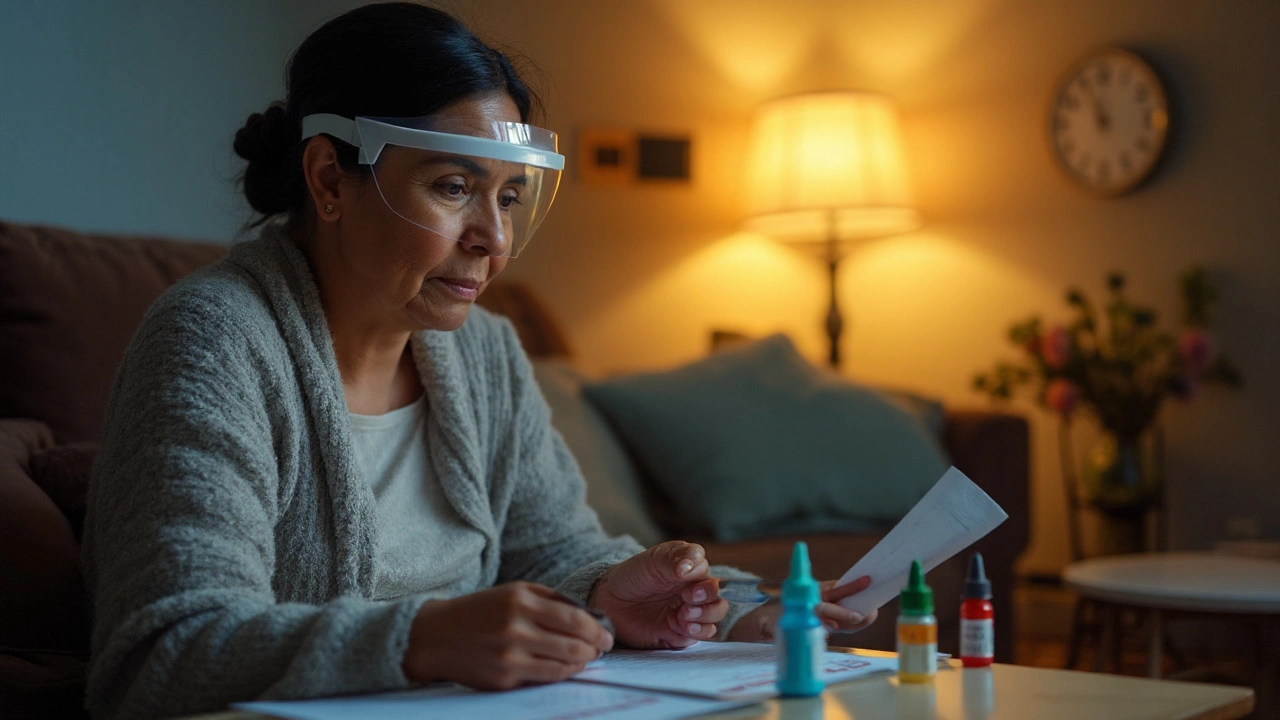
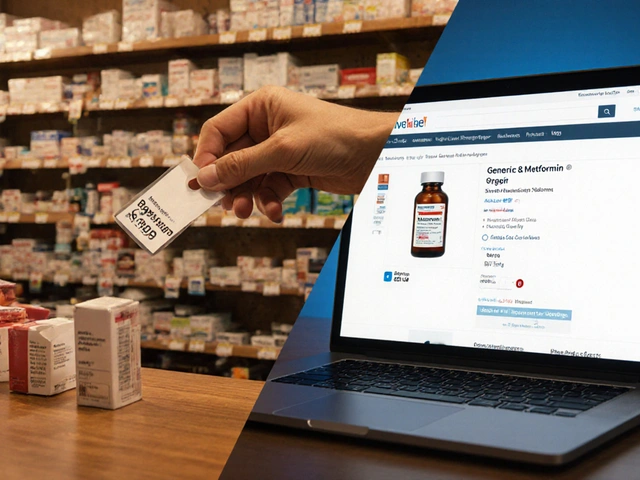
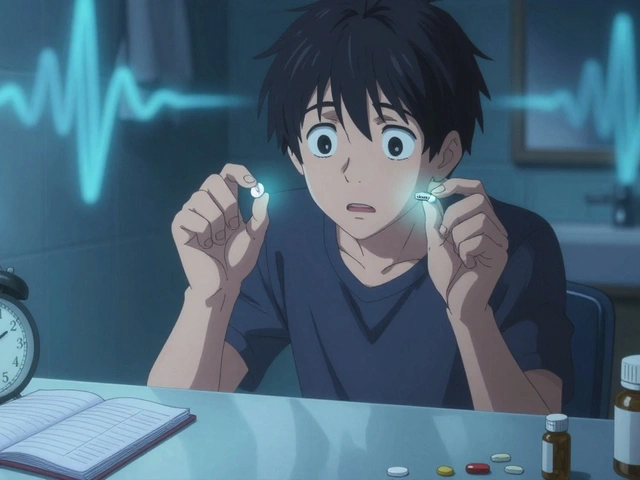

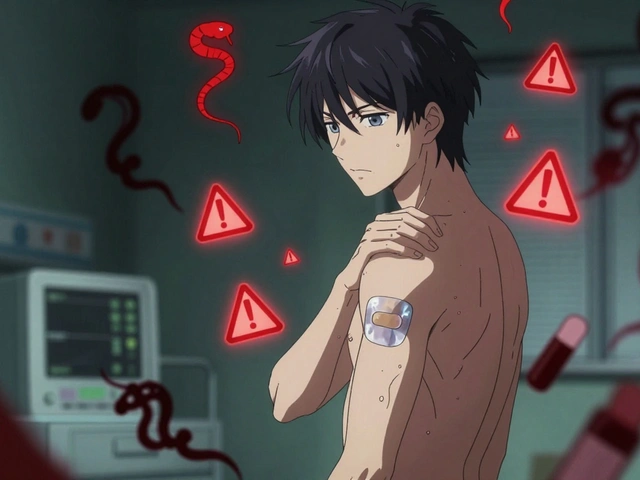


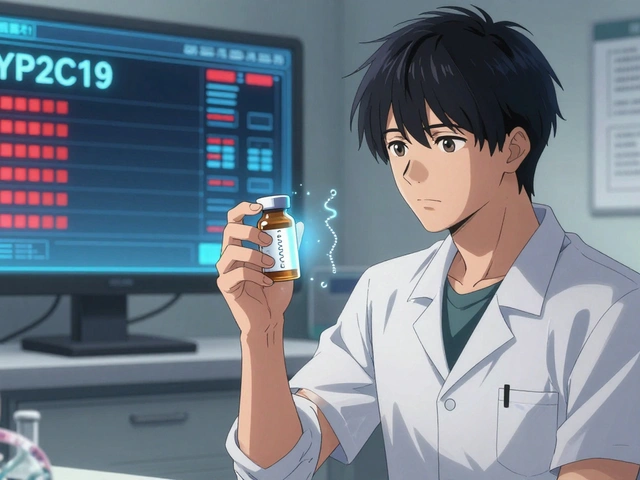

Sara Larson
Besifloxacin is overhyped. Intracameral antibiotics do 90% of the work. Topical stuff is just placebo with a price tag. Save your money.
dan koz
I'm from Nigeria and we use ofloxacin because it's cheap and works fine. Why pay 10x more for a brand that's barely better? This is US healthcare nonsense.
Siddharth Notani
Excellent breakdown. The ARMOR data is critical - besifloxacin’s lower MICs against MRSA make it a rational choice despite cost. 🙌
May .
why do people still use this when trimethoprim/polymyxin is 5 bucks and does the job
Katey Korzenietz
You people are ignoring the real issue - big pharma pushing expensive drops while real patients go blind from cost barriers. This isn't medicine its capitalism
Storz Vonderheide
I've used besifloxacin for 10 years in my practice. The DuraSite vehicle really does make a difference in surface retention. I've seen fewer early keratitis cases since switching from moxifloxacin. Not magic, but meaningful. And yes, I shake the bottle. Every time. 😊
Cyndy Gregoria
I love how this guide says 'escalate without hesitation' - that’s the mindset we need. Too many wait too long and then it’s too late. Just treat like it’s a ticking bomb. 💪
Mark Gallagher
This is why American medicine is broken. We pay $200 for a bottle of drops when India makes the same thing for $2. We’re being scammed. Buy generic or don't bother.
Wendy Chiridza
The 24 hour load rule is gold. I use it for all my PRK patients. If the infiltrate doesn't shrink by day 2 I call the cornea service immediately. No waiting
Kevin Estrada
I swear this is all just a scam. The FDA approved this for conjunctivitis and now everyone’s using it for surgery like it’s a miracle cure. What if it’s just the povidone-iodine doing all the work? Who even tested this properly? I think they’re hiding data
Josh Bilskemper
If you're still using gatifloxacin you're operating in 2012. Besifloxacin's resistance profile is superior. The data is clear. If you disagree you're either misinformed or resistant to evidence
Susan Haboustak
I've seen 3 cases of steroid-induced fungal keratitis after patients used besifloxacin with prednisolone. No one talks about this. You're just delaying diagnosis by masking symptoms with a fancy drop. This isn't treatment - it's dangerous distraction.
Sara Larson
You're right. The real issue is the cult around besifloxacin. We're overtreating. The AAO says topical is adjunct. But everyone uses it like it's mandatory. That's not evidence - that's habit.